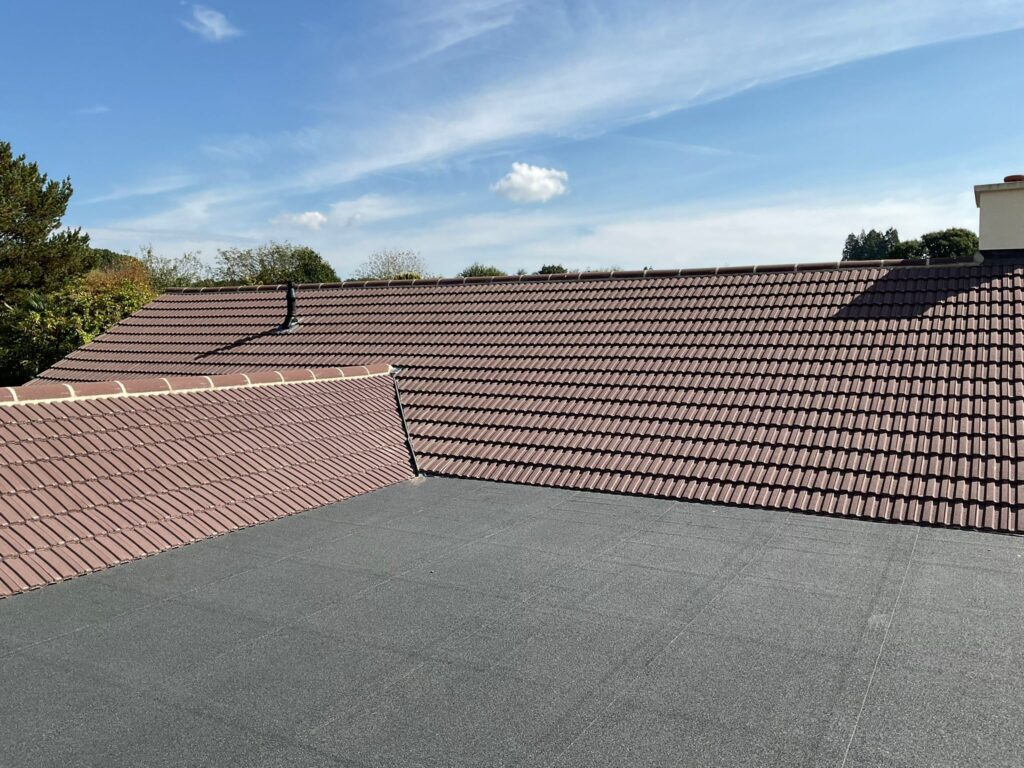Liquid roofing has gained popularity as an effective, versatile solution for protecting and sealing roofs. It provides seamless, waterproof coverage that is ideal for flat roofs, industrial buildings, and even pitched roofs in some cases. However, the success of a liquid roof installation relies heavily on the correct application techniques. At MCM Roofing Repairs Verwood, we specialise in liquid roofing services throughout Verwood, Dorset, and we understand the critical importance of applying these materials with precision and care. In this blog post, we’ll explore why proper application techniques are essential for liquid roofs and how they can impact the longevity and performance of your roof.
1. Ensuring a Seamless Waterproof Barrier
One of the primary benefits of liquid roofing is its ability to form a seamless, watertight membrane over the entire roof surface. This barrier is crucial for preventing leaks, especially on flat roofs where water can pool. However, achieving this level of protection depends on how well the liquid roofing material is applied.
- What Can Go Wrong: Improper application can result in uneven coverage or thin spots, which can compromise the roof’s waterproofing capabilities. Gaps or inconsistencies can lead to water ingress, causing leaks that damage the underlying structure.
- Why It Matters: A properly applied liquid roof will form a uniform, consistent layer, ensuring that water flows off the roof without penetrating the surface. This is especially important in the damp and rainy climate of Dorset, where roofs are frequently exposed to wet conditions.
2. Maximising Durability and Longevity
Liquid roofing materials are designed to be long-lasting and durable, providing protection against UV radiation, extreme weather, and general wear and tear. However, the lifespan of the roof is directly influenced by the application process.
- What Can Go Wrong: If the roof is not properly prepared before the liquid material is applied, or if the application is rushed, the roof may not adhere correctly. This can result in bubbles, blisters, or cracks forming over time, shortening the roof’s lifespan.
- Why It Matters: A carefully applied liquid roof ensures full adhesion and smooth coverage, which enhances its ability to withstand harsh weather conditions and UV exposure. When applied correctly, liquid roofs can last for many years without the need for frequent repairs, offering excellent long-term value.
3. Achieving Full Coverage on Complex Roof Shapes
One of the reasons liquid roofing is so versatile is its ability to cover roofs with complex shapes, including around vents, chimneys, and other protrusions. However, this versatility is only effective if the material is applied with precision.
- What Can Go Wrong: In areas with complicated shapes or difficult-to-reach spots, improper application can result in areas being missed or inadequately covered. These weak points can become the source of leaks or deterioration.
- Why It Matters: Proper application techniques ensure that every part of the roof, including around awkward corners and fittings, is fully covered. This comprehensive coverage is essential for maintaining the integrity of the roof and preventing issues down the line.
4. Preventing Costly Repairs and Rework
When a liquid roof is applied incorrectly, the consequences can be costly. Poor application may require additional repairs or even a complete reapplication of the liquid material, leading to increased expenses and disruption.
- What Can Go Wrong: Common mistakes, such as applying the liquid material too thickly or too thinly, can result in cracks, leaks, or even the failure of the roof’s membrane. These errors often require immediate correction to avoid further damage.
- Why It Matters: Using professional techniques and ensuring that the material is applied evenly across the roof can prevent the need for costly repairs. This also ensures that the roof provides the protection it was designed for from the very beginning.
5. Importance of Surface Preparation
One of the most critical steps in the liquid roof application process is surface preparation. The roof’s surface must be clean, dry, and free from debris or existing damage before the liquid material is applied.
- What Can Go Wrong: Failing to properly prepare the roof surface can prevent the liquid roofing material from bonding effectively. Dirt, moisture, or cracks in the surface can interfere with adhesion, resulting in peeling or blistering.
- Why It Matters: A well-prepared surface ensures that the liquid roofing material adheres fully, providing a strong, seamless bond. This is especially important for roofs in areas like Verwood, where weather conditions can quickly degrade poorly applied materials.
Conclusion
The proper application of liquid roofs is essential for ensuring a durable, long-lasting, and watertight solution. From ensuring even coverage and adhesion to maximising the roof’s lifespan, the benefits of liquid roofing can only be fully realised with expert application techniques. At MCM Roofing Repairs Verwood, we pride ourselves on our attention to detail and professional application services, ensuring that every liquid roof we install offers the best possible protection for your property. If you’re considering liquid roofing for your home or business in Verwood, Dorset, contact us today to learn more about how we can help you with professional, high-quality roofing solutions.
Call us on: 01202 149 796
Click here to find out more about MCM Roofing Repairs Verwood
Click here to complete our contact form and see how we can help with your roof.

